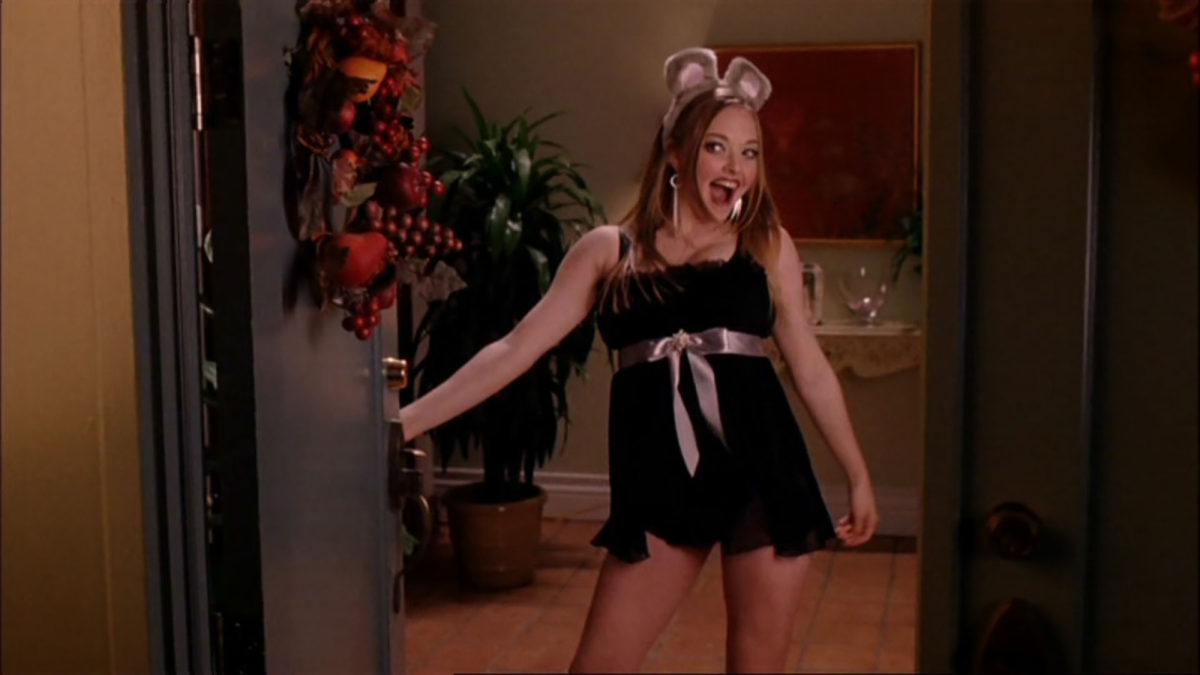Cast your minds back to 2004 classic, Mean Girls. Cady Heron is invited to her first Halloween party, but not knowing the rules of ‘girl world’, turns up dressed as a zombie bride. False teeth, black wig, fake blood, the perfect scary Halloween outfit. Yet:
‘Why are you dressed so scary?’
Cady is surrounded by bunny ears, latex leather catsuits and sexy cheerleaders in barely-there skirts.
This is now the reality of Halloween for many young women. Dressing scarily is no longer the point of Halloween. Instead, it is a competition as to who can wear the sexiest costume.
It’s interesting to note the differences in costumes for different age groups, too – take a look at the difference between an adult female Alice in Wonderland costume, compared to a young girl’s Alice:
The adult costume is titled ‘alluring’ and is hypersexualised, compared to the younger counterpart, with simply an apron and flats, demonstrating the pressure on adult females to look sexier. Once, the only purpose of their night would have been to collect candy, not to become eye-candy! It’s scary to see how quickly Halloween changes meaning between life stages.
When asking some female students for their opinions about the sexualisation of Halloween outfits for women, cheerleaders and schoolgirls came up as a common problem. These stereotypes are often sexualised and, in some cases, even fetishised, yet are mostly associated with girls younger than 18. There is also nothing ‘scary’ about dressing up in these garments, which seems to defeat the purpose of Halloween. Nowadays, it is more like a general costume party, where anything goes.
As well as being designed to attract men, young women’s Halloween costumes are often an example of female compliance towards men. Occupational costumes that are stereotypically female will often become sexualised, such as a ‘sexy’ nurse, teacher or librarian. Whilst some male adult garments are occupational, such as a firefighter; most male outfits are commonly to do with sports, or superheroes, whereas the female options are often only related to/for the male gender, such as a bride or a maid. These costumes could be see to devalue a females’ status and show a focus of women ‘needing’ or being attached to a male counterpart.
On the other hand, some contributors said that they have never felt the pressure to dress sexy. One female student, Georgia, feels that ‘it’s the backlash received from other people,’ for dressing ‘too sexy’ or looking like ‘a slut’ that causes a problem with Halloween costumes. This shows another side of the issue with sexualisation of costumes, as it can encourage peer-pressure, or slut-shaming and bullying.
Another point raised by student Gaby is that, ‘it’s more of an issue that I should be allowed to wear a ‘sexy’ costume if I want to and not worry about being slut-shamed about it.’ The solution for young women and dressing up for Halloween could then lie in the hope and mentality that everyone should be able to wear what they want without fear of being judged by one another.



